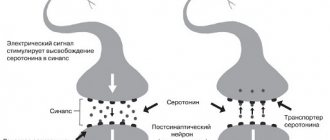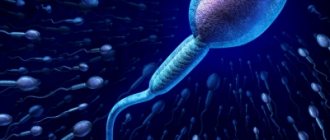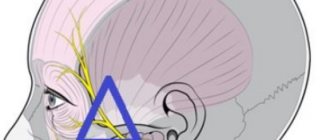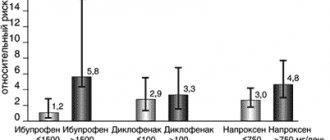- 685000 Magadan, Karl Marx Ave., 1
- Hotline number: +8
- Version for the visually impaired: go
- We are on Instagram
Regional state government institution. Created by Decree of the Administration of the Magadan Region of December 14, 2004 No. 47 through the reorganization of the Main Directorate for Civil Defense and Emergency Situations of the Magadan Region, from January 1, 2005
More about the center
Carrying out activities in the field of civil defense, preventing emergency situations of an intermunicipal and regional nature, natural disasters, epidemics and liquidation of their consequences, fire safety, rescuing people on water bodies within its competence.
More details
Currently, the Fire and Rescue Center has its branches in many urban districts of Kolyma in Olsky, Khasynsky, Tenkinsky, Omsukchansky, Srednekansky and North-Evensky.
More details
The center has modern technology aimed at saving the population and preventing the consequences of emergency situations.
Learn more
Back Forward
WIND, SNOW, BLAZING, HEAVY SNOW AND RAIN EXPECTED IN THE MAGADAN REGION
Emergency warning for November 11-12, 2021
Today, 14:27
WIND WITH BLOWING BLOWING IS EXPECTED IN MAGADAN AND IN THE REGION, IN OLSKY DISTRICT WIND WITH BLOWING BLOWING AND HEAVY SNOW
Emergency Alert for November 11, 2021
Yesterday, 16:10
IN NAGAEV BAY THE RESCUE BOAT “FIRE AND RESCUE CENTER” COMPLETED ROUND THE CLOCK DIAL.
The rescue ship was first launched in Nagaev Bay in 2006.
9-11-2021
HEAVY SNOW, WIND AND BLIZZLING REMAIN IN THE MAGADAN REGION
Emergency Alert for November 8, 2021
7-11-2021
HEAVY SNOW, WIND AND BLAZING EXPECTED IN THE MAGADAN REGION
Emergency Alert for November 7, 2021
6-11-2021
CHRONICLE OF MAIN FIRE FIGHTING EVENTS IN NOVEMBER
November 26, 1964 - at the 1st congress of the All-Russian Voluntary Firefighting Society in Leningrad, the Charter of the VDPO was adopted. (345 delegates. A Central Council of 47 people was elected.)
1-11-2021
HOW TO ACT TO PREVENT FIRE
do not heat varnishes and paints on a gas stove, do not wash in gasoline or dry clothes over the stove; when handling holiday fireworks, crackers and candles, be extremely careful; avoid cluttering possible escape routes and storing explosive and fire-hazardous substances in the attic and basement; do not insert more than two plugs into one socket to avoid overheating; NEVER SMOKE IN BED
The fire occurred in 2021 in the region
Km² area of Magadan region
Firefighters from the Center went out to extinguish fires several times
times the Center's rescuers went out to eliminate emergencies and carry out rescue work
First aid for mushroom poisoning
Inexperienced mushroom pickers often become victims of toadstool poisoning. Mushroom poison causes damage to the central nervous system, liver and kidneys. Therefore, first aid for poisoning with poisonous mushrooms should be provided by doctors!
How can you help a person before the doctor arrives?
After you have called an ambulance, first aid for mushroom poisoning at home consists of gastric lavage. It should be rinsed until the rinsing waters become clear. After this, you can give the victim Enterosgel sorbent.
Operative information
Emergency warnings, fire reports, monitoring
Emergency warning for November 11-12, 2021
On the possible occurrence of emergency situations in the Magadan region on November 11-12, 2021
Today, 14:27
Emergency Alert for November 11, 2021
On the possible occurrence of emergency situations in the Magadan region on November 11, 2021
Yesterday, 15:35
Review of fires that occurred from November 1 to November 7, 2021.
During this period, 20 fires occurred, of which 4 were garbage fires.
8-11-2021
Clinical data
- Intoxication during the first 3-4 hours (as with ethanol) is often accompanied by decreased consciousness, nausea, vomiting and ataxia.
- Acidosis due to glycosylic acid after 3-4 hours.
- Hyperventilation, tachycardia and hypertension.
- Severe acidosis can cause hypotension, coma, and respiratory arrest.
- Seizures, possibly papilledema.
- Acute oliguric renal failure.
Additional Research
· Determining your glucose level will help rule out or confirm hypoglycemia.
· A blood test will indicate tylene glycol in the plasma.
· Osmolality gap (calculation of osmolality gap) increases during poisoning.
· Calculation of electrolytes and anion gap (calculation of anion gap) increases.
· Acid/base status and blood gases: metabolic acidosis, ionized calcium, hypocalcemia, creatinine.
· A microscopy blood test will indicate crystals (it may take some time for them to form). Crystals come in 2 types: needle-shaped (calcium oxalate) and envelope-shaped.
A patient with suspected ethylene glycol poisoning should be immediately hospitalized and examined.
Technical support of the center
To carry out search and rescue operations, rescuers have in their arsenal sea vessels, inflatable motor boats, all-terrain vehicles, off-road vehicles, and snowmobiles.
At the expense of the regional budget, the fire and rescue center purchased for the search and rescue team: a mobile control center equipped with all types of communications (radio, satellite, television); a laboratory vehicle with equipment for express diagnostics for the purpose of detecting and indicating radioactive, biological (bacteriological) contamination and chemical contamination of objects, raw materials, and the environment; All-terrain vehicle based on KAMAZ. To learn more
First aid for drug poisoning
Drug poisoning can be accidental or intentional. Poisoning in young children occurs due to the fault of adults - tablets are sometimes in a place accessible to children. In case of poisoning at home, it is advisable to find out before the doctor arrives the medicine that the victim took and induce vomiting, then rinse the stomach with warm water and give Enterosgel sorbent.
Providing first aid will help avoid disorders of the cardiac, respiratory and nervous systems.
In a hospital setting, treatment with antidotes, control of intoxication and other resuscitation techniques are carried out to restore the function of internal organs.
Communication and notification
Notification of the population about airborne, radioactive, chemical, and earthquake hazards is carried out simultaneously through an automated centralized warning system using remotely controlled electric sirens, as well as using existing wired broadcasting networks, radio broadcasting and television, regardless of their departmental affiliation and form of ownership.
In order to ensure timely and reliable notification of the population and provide them with information about the situation and their actions in the current conditions, the following notification procedure has been established. More details
First aid for food poisoning
In case of food poisoning, the “culprits” are most often foods contaminated with pathogenic microbes or containing microbial toxins. The source of infection can also be water contaminated with bacteria.
Symptoms of poisoning develop quite quickly - from half an hour to several hours after eating.
What to do in case of poisoning?
It is necessary to clear the stomach of the toxic substance as soon as possible. This can be done before the ambulance arrives, by washing the stomach with 1-2 liters of boiled water or a weak solution of potassium permanganate, and giving an anti-poisoning gel - Enterosgel.
In case of diarrhea, it is necessary to replenish fluid loss by giving the patient unsweetened tea and salted water.
First aid if a child is poisoned by poor quality food can be provided by parents.
What can be done:
- Rinse the stomach;
- Provide plenty of fluids;
- Give Enterosgel sorbent (safe and recommended from the first days of life);
- Call a doctor.
First aid for poisoning in adults also involves taking Enterosgel sorbent, which effectively absorbs toxins in the intestines. In the absence of diarrhea, the doctor prescribes an enema or the patient is given a saline laxative to remove the toxic substance from the intestines, and detoxification therapy is prescribed.
PSC today
The staff size of the CENTER is 750 staff units. The CENTER has 6 branches in the Magadan region in the following districts: Olsky, Khasynsky, Tenkinsky, Omsukchansky, Srednekansky and Severo-Evensky. Over the past three years, six fire service units of the Magadan Region have been opened in the Magadan Region: in the Olsky district - in the village of Talon, the village of Balaganny, the village of Takhtoyamsk, the village of Tauisk; in the Omsukchan district - in the village of Dukat; in the North Evensky district - in the village of Gizhiga. Currently, the CENTER includes 2 detachments of the State Fire Service, 14 fire departments, including the fire department of the technical service, and a search and rescue squad.
- Technology Center
- Communication and notification
- PSC today
Disease history
History taking
In adults, consumption is usually for suicidal purposes or as an alternative to ethanol. To compile a medical history, it is worth clarifying the presence of symptoms and the following information from the patient:
- Amount and timing of ingestion: when and for how long did the patient drink?
- What did you use with ethylene glycol? Parallel ingestion of ethanol reduces the toxic effect.
- Was the patient also taking pills or drugs? What and how much?
- Could other people also mistakenly drink this liquid?
- Does the person have chronic problems with alcohol? If so, then after treating the poisoning, he should choose an effective coding method .
Reminders to the population
Natural emergencies. Emergency situations of man-made nature. Measures to protect the population from emergencies.
WHAT ARE EMERGENCIES? (emergency)
Natural emergencies. Emergency situations of man-made nature. Measures to protect the population from emergencies. More details
AUTONOMOUS EMERGENCY PICKET
Instructions for use. Layout of pickets on the roads of the Magadan region Read more
EARTHQUAKE
EARTHQUAKE - these are underground tremors and vibrations of the earth's surface, resulting from sudden displacements and ruptures in the earth's crust or upper mantle and transmitted over long distances in the form of elastic vibrations. More details
SNOW SKID
This is a hydrometeorological disaster associated with heavy snowfall, with a wind speed of over 15 m/s and a snowfall duration of more than 12 hours. More details
BLACK ICE
ICE is a layer of dense ice formed on the surface of the earth, sidewalks, roadways and on objects (trees, wires, etc.) when supercooled rain and drizzle (fog) freeze. More details
HEATING STOVES
OPERATING RULES FOR HEATING STOVES More details
DOMESTIC FIRE
FIRE SAFETY AT HOME Read more
NOTIFICATION SYSTEM
Hearing the warning signal “ATTENTION EVERYONE!” necessary: VIDEO More details
The widespread use of ammonia in agriculture creates the preconditions for inhalation poisoning. Transportation of ammonia and ammonia water is associated with the risk of road accidents involving ammonia tankers. The risk of ammonia vapor entering the human body through the respiratory tract during man-made accidents at industrial facilities is high [1–3].
The lack of a unified approach to the provision of medical care for inhalation ammonia poisoning determines the need to conduct fundamental research to clarify the processes occurring primarily in the respiratory organs as a result of the action of this toxin. The appearance in the literature of recommendations for victims of ammonia vapor to be inhaled with alcohol and alkali from the very first hours, to ingest warm milk with Borjomi or baking soda [4, 5], along with the available experimental data indicating a change in the pH of the ciliated epithelium towards the alkaline side [ 6], aroused interest in the study of pathological processes at the cellular level. It is possible that treatment of victims of ammonia vapor, aimed at regulating the acid-base balance, will lead to hope for increasing the effectiveness of treatment measures and will lead to a decrease in mortality.
The results of pathomorphological studies of inhalation poisoning by ammonia vapor have not yet given a clear idea of the features of the manifestation of its toxic effect. They are mainly limited to identifying pulmonary edema, necrosis of the pharynx, larynx, trachea and bronchi [7, 8]. In this regard, conducting experimental scientific research and studying the mechanisms of manifestation of the toxic effect of ammonia vapor on the respiratory tract using the histological method seem timely. Thus, the question of what mechanism of toxic manifestation occurs when ammonia vapor affects victims, as well as the problem of providing them with medical care, remains relevant.
According to the literature, in cases of severe poisoning, people experience lacrimation, eye pain, suffocation, coughing, and dizziness. Death occurs as a result of painful shock, asphyxia that develops as a result of swelling of the laryngeal mucosa, pulmonary edema, intoxication or complications [8, 9].
In this work, the goal was to experimentally study in detail the morphological changes that occur in the respiratory organs, and, based on the data obtained, to evaluate the justification of some recommendations for the treatment of victims of ammonia vapors.
Material and methods
The experiment used 20 white rats with a live weight of 180-210 g. Experimental modeling of inhalation ammonia poisoning was carried out in a specialized chamber with a volume of 2.3 m3, which had a hermetically sealed loading and unloading hatch, an exhaust ventilation system to create negative pressure inside the chamber, equipped with a pressure gauge. The chamber had an ammonia evaporator (SAG-1) and a fan for moving vapors. To obtain ammonia vapor, the active substance in the form of a 25% aqueous solution was added to the evaporator and heated to 60 °C. The concentration of ammonia vapor was determined using a universal gas analyzer UG-2. Air samples were taken from the chamber every 10 minutes for 2 hours.
The larynx was examined using a stereoscope. To do this, it was extracted as a separate complex, fixed in 10% neutral formaldehyde, and dehydrated in alcohols of increasing density according to a special scheme for small animals. Histological sections were stained with hematoxylin and eosin. Subsequently, transverse histological sections were prepared from these objects. A histological examination of the internal organs was also carried out. The pH of blood serum was determined using universal Lach-Ner indicator paper. The internal organs of control animals (5 rats of different sexes, live weight 180-230 g) were also subjected to histological examination.
Results and discussion
When the concentration of ammonia vapor in the chamber was 32.6 mg/l, after 2-4 minutes the first signs of intoxication appeared in the rats in the form of restlessness and sneezing. After 7-10 minutes, the animals began to vigorously “rub” their eyes and nose, and moved chaotically around the chamber. Further, the signs of intoxication intensified. The animals hid in a corner, they exhibited difficulty breathing, salivation, wheezing, ataxia, tremor, tonic and tetanic convulsions. The first signs of difficulty breathing were manifested in the fact that the animals occasionally stretched their necks and swallowed air; later attempts became more frequent and with great difficulty. All experimental animals died within 3 hours.
In animals that died during the experiment, regardless of the time of death, there was venous congestion of the internal organs, cerebral edema, a sharp increase in the size of the stomach and the accumulation of a large amount of gas inside it. In 50% of the animals, the lungs were full of blood and filled the pleural cavity; in the rest, the lungs were compressed and pale pink in color. When studying histological preparations, morphological signs of microhemodynamics and hemorheology disturbances were observed in the form of paretic venous congestion of internal organs, plasma separation, and hemolysis of erythrocytes. Hemorrhages were found in internal organs: lungs, brain, heart, liver. Hypoxic-type changes in neurons were determined in the brain. Brain edema was most intense in the brainstem regions. Single neurons were sharply enlarged, nuclear-free with unclear contours. Edema, vacuolization, and cloudy swelling of hepatocytes were observed in the liver. In the renal cortex, focal necrosis of the convoluted tubule epithelium, desquamation of the epithelium, and cloudy swelling of the remaining parenchymal cells were visible. In the lumens of the tubules, desquamated epithelial cells and eosinophilic masses were detected. Focal delipidation of the adrenal cortex was revealed.
All experimental animals exhibited spasm of the glottis with a sharp narrowing of the lumen. The severity of narrowing of the glottis varied from 1/3 to 3/4. The lumen of the larynx was filled with light pink serous masses. It was noted that the greatest narrowing of the glottis with its complete closure by mucus was accompanied by collapse of the lungs.
The mucous membrane of the larynx was dark red. A study of histological preparations of the larynx showed the following: the mucous layer was completely desquamated, the underlying fibrous structures were swollen, homogenized, and interstitial accumulations of eosinophilic masses and erythrocytes were detected in them. There were focal necrosis with basophilic staining of the tissue. In the lungs, focal emphysema was detected with ruptures of the interalveolar septa and fusion of several alveolar cavities. The bronchi were in a state of mild spasm with desquamation of the epithelium; the lumens of some of them contained eosinophilic masses and single leukocytes. Infiltration of the walls of the bronchi and peribronchial tissue with leukocytes and lymphocytes was observed. There were focal violations of the integrity of the bronchial walls. The walls of some vessels in some areas were homogenized with necrosis, messages were found in places of defects in the walls of the bronchi and blood vessels. The contents of the vessels looked like fine-bubble masses. The connective tissue surrounding the damaged vessels was without a clear structure, with interstitial accumulations of eosinophilic fine-bubble masses.
The results obtained became a prerequisite for studying literature data on the physicochemical properties of ammonia. Thus, it was revealed that ammonia gas is a contact toxic substance that reacts directly with affected tissues. The solubility of ammonia in water is greater than that of all other gases: one volume of water absorbs about 1200 volumes of ammonia at 0 °C, and about 700 volumes of ammonia at 20 °C [10]. Upon contact, it dissolves in tissues, forming ammonium hydroxide, which is a corrosive alkaline solution. Thus, the results of our morphological studies and literature information on this issue indicate that these features of the interaction of ammonia with body tissues led to the formation of deep colliquation necrosis found in the larynx, edema and a sharp narrowing of the glottis and, as a consequence, to the development of hypoxia.
When changing the pH of blood serum in experimental animals, a shift to the alkaline side up to 9 was detected.
Thus, it was revealed that, having high hydrophilicity, ammonia interacts with the liquid contained in the tissues and forms alkaline compounds. As a result of this interaction, fine-bubble accumulations appear in the stroma and lumens of the lung vessels, which is determined in histological preparations. In the upper respiratory tract, edema develops, a pronounced narrowing of the glottis, which leads to the development of hypoxia and is manifested by hypoxic changes in neurons. In case of inhalation ammonia poisoning, the pH of the blood plasma shifts to the alkaline side. The identified features of the toxic effect of ammonia allow us to conclude that one of the reasons for the severity of the condition of the victims is asphyxia due to swelling and spasm of the larynx, and its manifestations can increase and lead to death, which does not contradict the literature data. In addition, the penetration of ammonia into the vascular bed leads to alkalization of the blood.
The data obtained made it possible to identify new aspects of inhalation ammonia poisoning and, in this regard, to identify new possible ways of treating victims, aimed at preventing the development of hypoxia, laryngeal edema, and also allow us to recommend the use of agents that affect the pH of the blood and mucous membranes of the respiratory tract.
All of the above allows us to conclude that it is inappropriate to carry out alkaline and alcohol inhalations in case of ammonia poisoning, as well as taking alkalizing liquids orally. We have planned further experimental studies to identify ways to restore the pH of blood serum in case of ammonia poisoning and to draw up recommendations for the treatment of this pathology.
Write to the center
You can inform the center about the facts of an emergency, and also call 112
About the site
© 2010 - 2021 Regional state government institution "Fire and Rescue Center for Civil Defense, Protection of the Population, Territories and Fire Safety of the Magadan Region"
Address: 685000 Magadan, Karl Marx Ave., 1 tel. Fax
Navigation
- To main
- About the center
- News
First aid for carbon monoxide poisoning
Gas poisoning (CO) is a severe intoxication of the body, which can lead to severe damage to internal organs. According to statistics, carbon monoxide poisoning occupies a leading position among the causes of death from acute poisoning, so it should be taken extremely seriously.
Symptoms of carbon monoxide poisoning:
- Headache;
- Drowsiness;
- Chest pain;
- Redness of the skin;
- Hallucinations;
- Dry cough;
Severe gas poisoning is accompanied by loss of consciousness.
It is important to recognize these symptoms in time and start treatment at home in a timely manner!
Providing first aid for carbon monoxide poisoning
First of all, you need to take the victim out of the contaminated room into fresh air and free him from restrictive clothing. To reduce intoxication, give him Enterosgel sorbent and urgently call an ambulance.
First aid for carbon monoxide poisoning is the antidote - acizole. It is recommended to administer the drug as early as possible in case of poisoning of any severity.
Prohibitions to remember
All of the above methods of providing first aid to people with alcohol intoxication should be used while the doctor is on the way. Imagining oneself as a luminary of science and trying to cure a person with severe poisoning is very risky. There is no need to give the patient medication. The only exceptions are sorbents that speed up the elimination of alcohol. But before using them, you should carefully read the information in the instructions.
Many drugs cannot be combined with ethyl alcohol. But only doctors know about this. It turns out that, wanting to alleviate the suffering of an alcohol addict, relatives can harm him. Illiterate drug correction can even lead to failure of vital organs. This is deadly.
It is forbidden to give a person a hangover
the day after the feast. Drinking alcohol does make you feel better for a while, but it increases the level of intoxication. This means that the toxic load on the body becomes more pronounced. Then it will take a very long time to recover.
Doctors prohibit dousing a person who has taken a large amount of alcohol with ice water or steaming them in a sauna or bathhouse. All these are extreme methods of traditional treatment. Often, it is after their implementation that cardiac failure begins. It is better to call a narcologist and wait for his arrival.
Attention! Attempts to lavage the stomach of a person who is in a semi-conscious or unconscious state lead to suffocation with vomit and instant death. You cannot induce vomiting if the patient loses consciousness.
What to do in case of severe alcohol intoxication with vomiting
The first thing you need to do is call a narcologist to your home.
This service can be obtained for money at a private narcology clinic. After contacting her, no one will register you.
Upon arrival to the patient, the doctor will immediately carry out the necessary therapeutic and preventive measures. But, if the patient’s condition causes concern, he will be taken to the hospital. It is very important that the poisoned person remains conscious throughout the entire treatment.
While the doctor is on the way, it is necessary to provide first aid to the person. To do this you should:
- Lay him on his left side.
This simple technique will prevent vomit from entering the respiratory tract. - Unfasten the top buttons of your clothes and open the window.
Then it will become easier for the addict to breathe. - In case of fainting, place a cotton ball soaked in ammonia to the drinker’s nose.
After inhaling ammonia vapors, he will come to his senses. - Perform gastric lavage.
This measure can only be used when treating people who are conscious and behaving adequately. A good solution for washing is a weak (caustic pink) solution of potassium permanganate. It must be drunk in an amount of at least one liter, and then pressed with your fingers on the root of the tongue. Some people think that the rich pink shade of the composition is more effective. This is wrong. If the concentration of potassium permanganate is high, a burn will occur to the mucous membranes of the pharynx, stomach, and intestines. - Apply cold to the occipital area.
Thanks to this, the gag reflex becomes less pronounced. It is clear that not every apartment has ice, so you need to improvise. Anything frozen or foods taken out of the refrigerator can be used as a compress.
Despite the simplicity of the methods listed, they are effective. Therefore, there is no need to forget about them.
It happens that the volume of alcohol taken is so high that a person loses consciousness. His heart stops. There is no need to despair. You should immediately begin chest compressions and artificial respiration. If resuscitation measures are not carried out, the poisoned person will die without waiting for the drug treatment ambulance.









